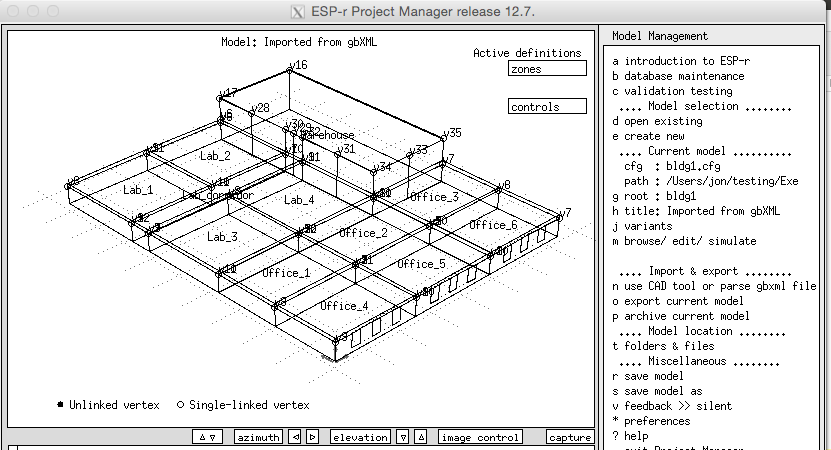Model import options
Model planning
There are known differences in the topology of form and fabric between different tools and export facilities can accommodate only some of these differences. For example, in ESP-r any surface can be transparent, it need not be a child of another surface but EnergyPlus requires transparent surfaces to be children. ESP-r can calculate insolation patterns in zones of arbitrary form but EnergyPlus only supports this for convex zones.
gbXML files can be imported. However, some will need to be converted from 16 bit font encoding to ASCII text (xmlcopyeditor can do this conversion). ESP-r sets limits on the length of entity names (some long names may be truncated). Some CAD tools allow you to create facades where parent surfaces have scores of child surfaces - for ESP-r ensure <20 child surfaces. Check that thermal zones are within the complexity limits of ESP-r (you may need to use an ESP-r compiled to support larger models).
A subset of the gbXML scheme is currently parsed so the resulting ESP-r model will likely need further attribution. For example, assumptions about constructions are made based on the building type and you are given options to specify operational characteristics of zones. It will also assign ideal cotrols for zones which are conditioned. Below is the ESP-r interpretation of the standard gbXML Exercise Center test file.
 see full size
see full size
Model import options
In addition to the normal interface facilities to create and evolve models ESP-r offers the following import options:
Model export options
Models can be exported in the following forms:
Entities which require additional attention
The following entities require additional attribution or transforms to be fully functional:
Model contents reports
In addition to information within the interface it is possible to generate a report of the contents of the model with the following options:
ESP-r model contents reports are designed to highlight issues which may not be clear in the interface as well as avoiding some of the arbitrary formatting found in the model files.
Back to top | Back to Welcome page